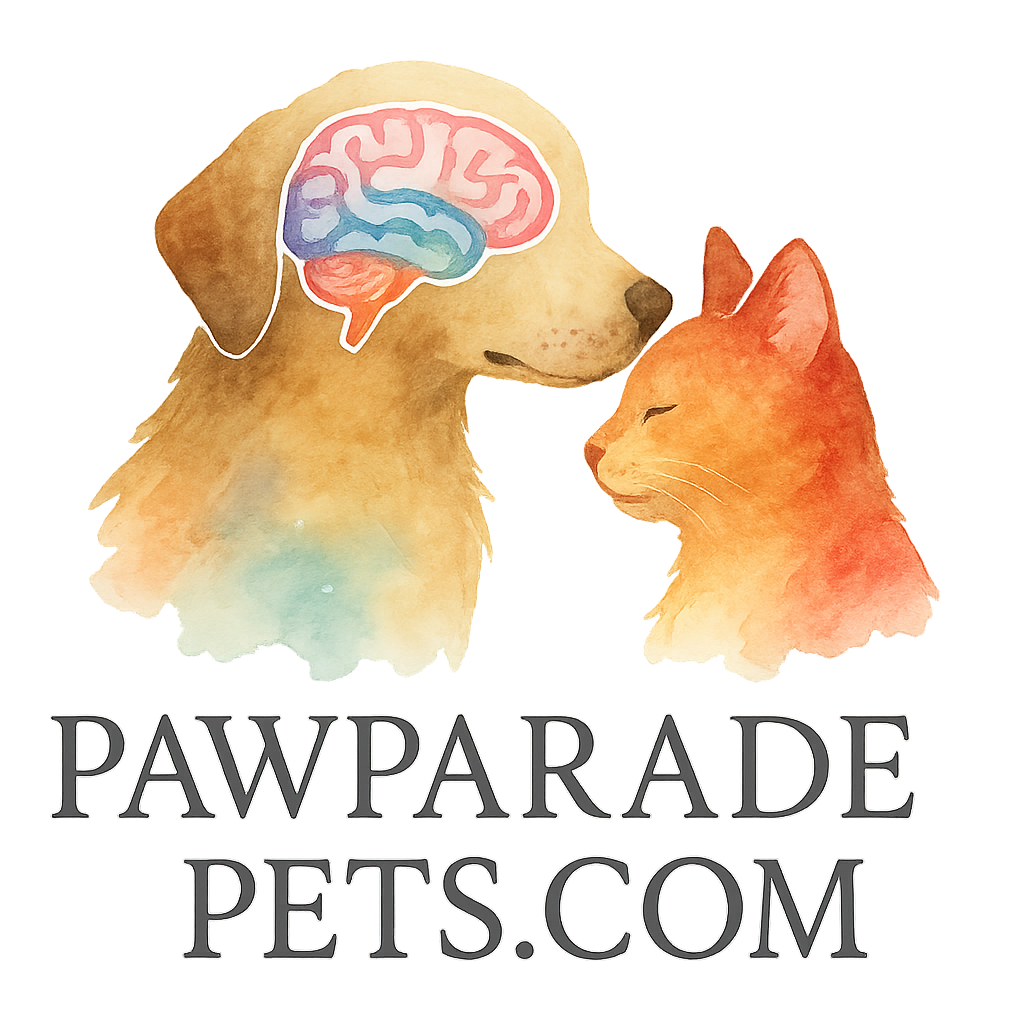Introduction
Got a furry friend that bounces off the walls 24/7? Hyperactivity in pets—especially dogs and cats—can be stressful for both pet and owner. But here’s the secret weapon most pet parents overlook: brain exercises! Mental workouts can be just as tiring as physical ones. In this post, we’re diving into 5 brain exercises that calm hyperactive pets. Ready to turn chaos into calm? Let’s go!
🐾 This post is loaded with practical tips and helpful links from Paw Parade Pets, your go-to for all things smart and tail-wagging fun!
Understanding Pet Hyperactivity
Signs of a Hyperactive Pet
Before you can solve it, you need to spot it. Hyperactive pets might:
- Constantly pace or run
- Bark or meow excessively
- Struggle to relax
- Be destructive when left alone
These aren’t just “bad behaviors”—they’re signs your pet might need more brain stimulation.
Causes of Hyperactivity in Pets
A hyper pet isn’t just a “wild child.” It could stem from:
- Boredom
- Lack of structure
- High-energy breeds
- Underlying anxiety
That’s why mental engagement is so important. If you’re dealing with an overactive furball, brain training might just be your new best friend.
Why Mental Stimulation is Key
The Science Behind Brain Exercises for Pets
Mental stimulation activates your pet’s problem-solving instincts, burns mental energy, and keeps boredom at bay. Pets love challenges—solving them gives a boost of dopamine, the “feel-good” chemical.
How Brain Games Help Calm Pets
Brain games tire your pet out without a 10-mile walk. Think of it like solving a Rubik’s cube versus doing jumping jacks—one uses your mind, the other your body. A combo of both is ideal.
💡 Related Read: Brain Training Basics
Brain Exercise #1: Puzzle Toys
How Puzzle Toys Work
Puzzle toys are like mental treadmills. They require your pet to figure out how to get to the treat. It challenges their brain, slows down their pace, and keeps them busy.
Best Puzzle Toys to Try
Try beginner to advanced levels depending on your pet’s skills. Look for:
- Sliding puzzles
- Hidden compartments
- Toys that need paws or noses to move parts
Internal Links to Explore
Brain Exercise #2: Scent Work
What Is Scent Work?
Scent work taps into your pet’s natural ability to sniff out stuff. Dogs, for example, have over 300 million smell receptors. That’s like giving them a superpower puzzle to solve.
Easy Scent Games for Home
- Hide treats in different rooms
- Use a snuffle mat
- Introduce essential oils (pet-safe only!) to objects
This form of brain exercise calms your pet by focusing their energy on a goal.
🔍 Don’t miss this: Games & Activities
Brain Exercise #3: Obedience Training Games
Fun Commands That Teach Discipline
Training doesn’t have to be boring. Try commands like:
- “Go find it!”
- “Touch my hand”
- “Spin!”
These build obedience, boost confidence, and help control hyperactive behaviors.
Combining Physical and Mental Activity
Turn your hallway into a training ground. Mix fetch with commands, or play Simon Says. It’s obedience meets fun!
👉 Check out: Behavior & Obedience
Also explore:

Brain Exercise #4: Interactive Feeding
Slow Feeders and Food Mats
Eating can be a challenge too! Slow feeders force pets to “work” for their meal, slowing their eating and boosting brain power.
Treat-Dispensing Gadgets
From rolling balls to high-tech feeders, these keep pets engaged. They reduce hyperactivity by turning mealtime into a thinking game.
🧠 Check out: Tag: Gadgets, Tag: Tech
Brain Exercise #5: DIY Brain Challenges
Hide-and-Seek With Toys
Hide their favorite toy under a blanket or behind the couch. It teaches patience and strategic thinking—yes, even for pets!
Create an Obstacle Course at Home
Use furniture, boxes, and cushions to create a mini agility course. It’s great for burning energy while requiring focus and decision-making.
🎯 Explore: Advanced Cognitive Challenges
Tips for Incorporating Brain Exercises Daily
Time Management and Routine
Consistency is key. Add 10–15 minutes of brain games to their daily routine. Morning sessions are especially helpful for calming the day’s energy.
Tracking Your Pet’s Progress
Keep a simple log. Did they complete a puzzle faster today? Were they calmer after training? Adjust based on what works.
📘 Try tagging with:
Benefits of Brain Training for Pets
Reduced Anxiety and Aggression
A tired brain is a calm brain. Brain exercises can significantly reduce stress-induced behaviors like chewing or barking.
Increased Bond Between Pet and Owner
When you play brain games together, you become part of their “pack.” It strengthens your bond and builds trust.
🐶 Explore: Tag: Engagement, Tag: Intelligent
Conclusion
Hyperactivity doesn’t mean your pet is broken—it just means they need more than a walk in the park. These 5 brain exercises that calm hyperactive pets can transform zoomies into zen moments. From puzzle toys to obedience games, scent work to interactive feeders, every pet can benefit. Want to raise a smarter, happier, and calmer pet? Start training their brain today.
🧠 For more enrichment ideas, visit Paw Parade Pets and explore all their tips, tools, and tail-wagging toys!
FAQs
1. How long should I do brain exercises with my pet each day?
Aim for 10–20 minutes daily. Start small and increase as your pet gets more comfortable.
2. Are brain games better than physical exercise?
Not better—just different. Use both for a well-rounded routine.
3. Can I make DIY brain games at home?
Absolutely! Hide treats, use boxes, or even a muffin tin and tennis balls for a quick game.
4. Do brain games work for cats too?
Yes! Cats love scent games, puzzle feeders, and even obedience commands.
5. What age can I start brain training?
Start as early as 8 weeks. Just adjust the difficulty level to their developmental stage.
6. What if my dog doesn’t like puzzle toys?
Try scent work or obedience games instead. Every pet has a favorite!
7. Where can I find more tools and guides?
Check out https://pawparadepets.com/tools-toys-for-brain-training and their brain training basics section.


